Shawn Havens' mill-drill table based slot mortiser
Shawn Havens sent me some picture of his slot mortising machine that he built using the same model of Thomson mill-drill table that I used for my first mortising machine and later turned into a horizontal boring machine. The Thomson mill-drill table is really quite a gem for the basis of a machine, and if you ever find one for sale, consider buying it!Shawn's machine incorporates elements of my slot mortising machine for the vertical adjustment, but relies on the mill/drill table for horizontal motion.
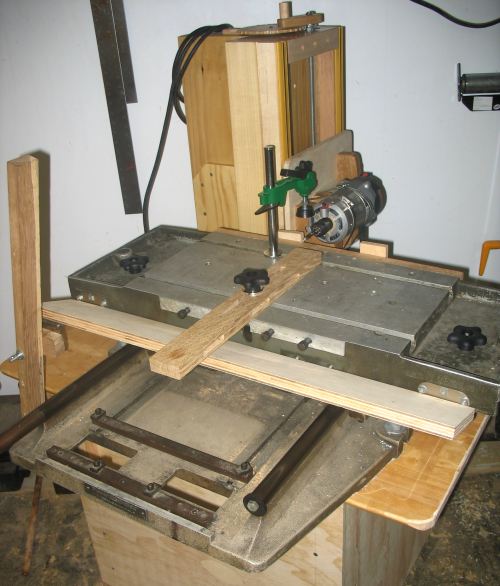 Shawn writes:
Shawn writes:Here are a few photos of the slot mortiser. The router stand is styled more from a milling machine setup rather that the box type that you used. Since the mill-drill table handles the X-Y movement I really needed to have the router stand tall and very solid. I used a big chunk of poplar that has been kicking around in my shop for 15 years. The lift mechanism and counter mechanism you will obviously recognize from your application. The lever handle system is still a work in progress. The area on the router side of the table was too confined to place the handle there. As in your multi-slot mortiser that is a more ideal location to keep it out of the way of the stock being mortised. However, mine is far enough away that it shouldn’t be a problem. I used inexpensive steel door hinges to simplify the building process of the handle components. It’s not as pretty, but it will work just fine. I still need to tweak a few things with it and then finish it down to a more aesthetically pleasing final form. I used your idea for lateral stop blocks mounted under the table. For some reason I was all worried about drilling into the table. Once I got over that I was able to get a lot done rather quickly.
Shawn's design puts the router mount behind the mill/drill table, whereas I had
sacrificed front/back travel by mounting my router mount onto the back part of the
front back guide rods. The advantage of Shawn's approach is that there is more
room on the machine if you mount it behind. My shop is limited in space, so
personally I optimized for compactness instead. My mill/drill table based machine
has the same problem with the lever getting in the way. My lever only controls
plunge, and side to side motion has to be done by pushing on the handles (which I
left in place)
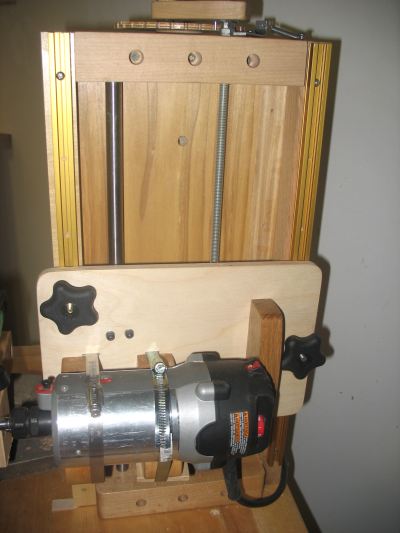 Shawn continues:
Shawn continues:
I had a problem with chatter while routing into hardwoods. I realized that the linear rod bearings had a slight vertical play in them, and that I would need to add a locking mechanism to the front. I wound up with one in front and one on the back. So far it seems as though only the one in front is necessary for actual use. The use of a birch plywood plate as a router base with maple block supports worked nicely. I went through two prototypes before making all the necessary adjustments.
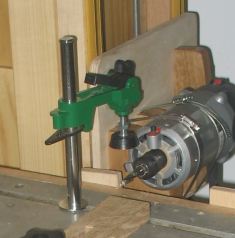 The hold down is a 15 dollar woodcraft drill press hold down with the ring cut off
of the nut. It works great!
The hold down is a 15 dollar woodcraft drill press hold down with the ring cut off
of the nut. It works great!
I have to get me one of those hold downs - perfect for the job!
Somehow, my machines have been tight enough to avoid the chatter. I did notice
the sleeve bearings have some play on the shafts. But with it all assembled,
probably due to slight misalignments of my holes, the mechanism is tight.
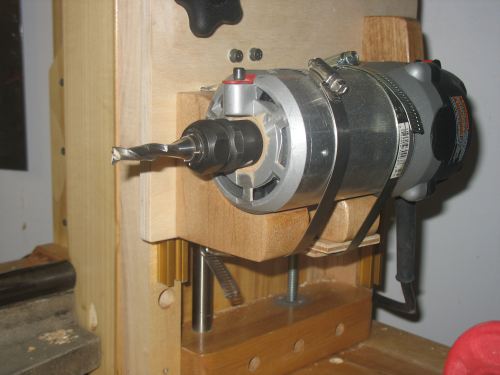 I asked Shawn which router he used. It has nearly identical dimensions
to the "Mastercraft" (Canadian Tire store brand) router that I used:
I asked Shawn which router he used. It has nearly identical dimensions
to the "Mastercraft" (Canadian Tire store brand) router that I used:
My router is a Porter Cable 895, it is a nice midsized router.
I rotated it so that the on/off switch would be readily accessible.
Of course that required slotting the maple brackets to allow the geared
rack on the router body to fit. In the end though that modification
helps keep the router body firmly held in place. The router mount is
attached directly to the table by using two brackets made from plywood
and oak scraps.
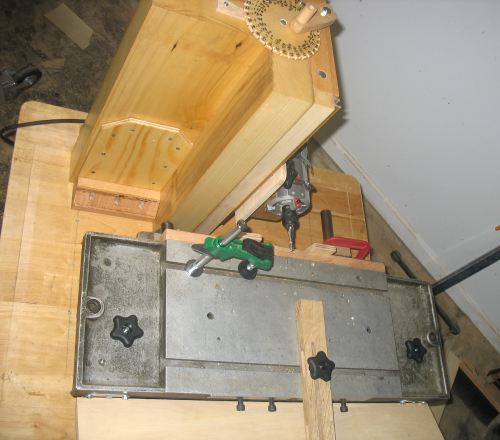
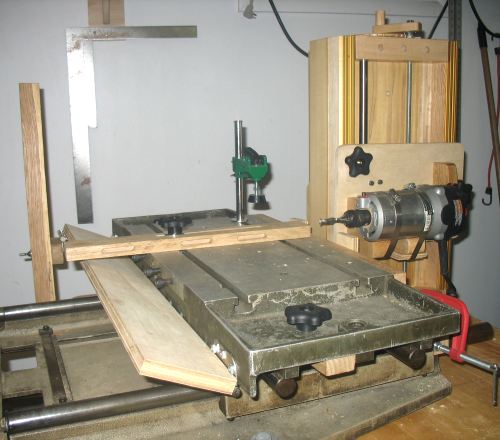
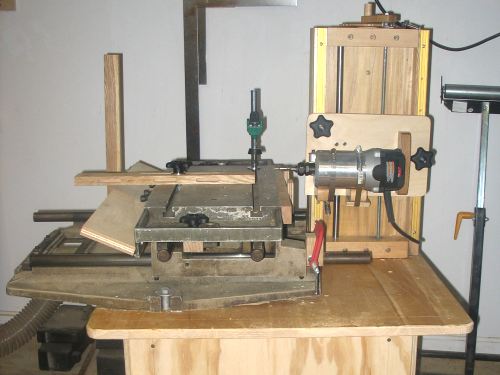
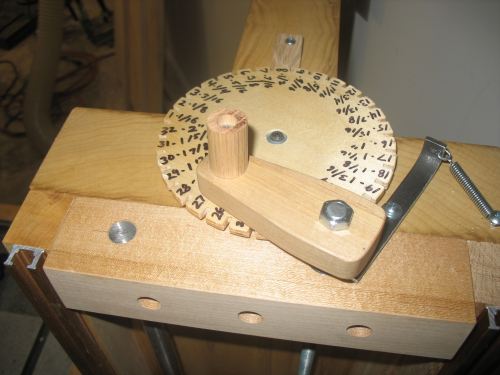
More slot mortisers submitted by readers on the
reader projects page
More on Mortise and tenon joints